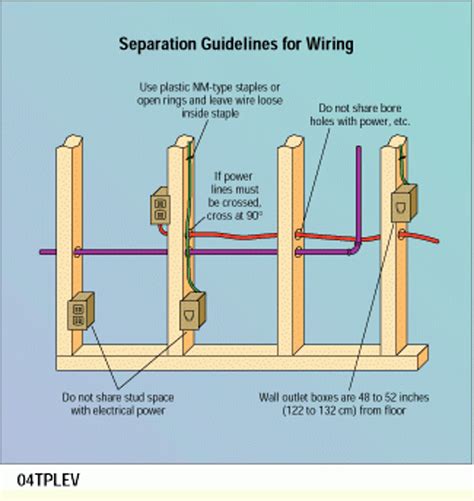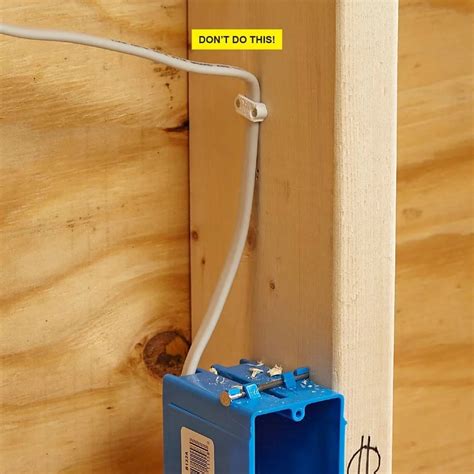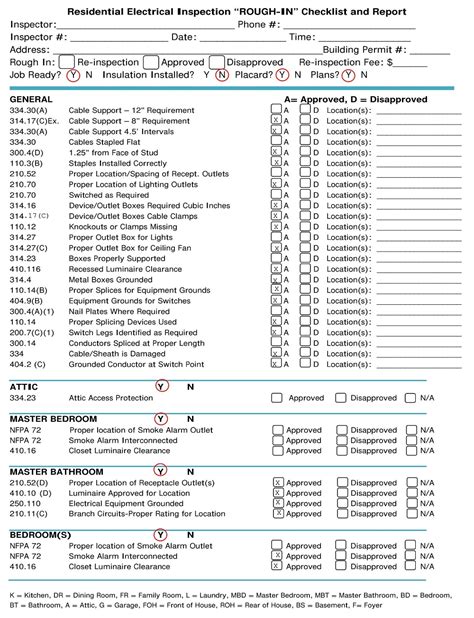electrical rough in boxes Electrician Brian Walo shows an easy way to strip non-metallic cable plus a great way to keep track of which wires do what. Watch this video to learn wire-stripping tips for roughing an . The type of junction and junction box used depends on the specific application, with box size varying to accommodate different wiring needs. We have rectangular, square, octagonal, and round metal junction boxes available today.
0 · roughing in electrical outlets
1 · rough in electrical wiring layout
2 · residential wiring rough in guide
3 · residential electrical rough in checklist
4 · electrical rough in symbols
5 · electrical rough in material list
6 · electrical rough in inspection guidelines
7 · electrical rough in check list
What Skills Do I Need to Be a Metal Fabricator? To be a metal fabricator, you need to be detail-oriented in your work and be committed to producing quality parts, especially when clients .
To clarify, roughing in as an electrician refers to pulling wring, drilling holes, mounting box heights for receptacles and light switches, or bending emt pipe, building pipe racks, building an electrical room, or even looking at .

Electrician Brian Walo shows an easy way to strip non-metallic cable plus a great way to keep track of which wires do what. Watch this video to learn wire-stripping tips for roughing an .Get tips on how to make sure you buy enough of the correct hardware and cable to run all of your circuits without having too much left over when you're done. Most of the materials installed during the rough-in phase can be installed . Standard electrical rough-in materials include various sizes of electrical wires to carry different loads, electrical boxes to house outlets and . Metal fatigue can result in scored or broken conductors, which in turn can cause short circuits, heat buildup, and in the worst cases, fire. Installing a safe electrical system is a huge responsibility that guides our work at rough-in .
Drill holes 6 to 8 in. above or below all switch and receptacle boxes. Do not run No. 14-, 12-, or 10-gauge cable across joists or along the bottom edge of joists. They should run along the sides of joists, through bored holes, or . You'll learn all of the pro techniques for a wiring job, including choosing the right size receptacle boxes, running cable throughout the room, and making the electrical connections. Plastic boxes and flexible nonmetallic cable (commonly called Romex) put electrical wiring projects within the skill range of every dedicated DIYer.
Part of an electrician’s job is setting boxes so they’ll be flush to finished surfaces. Before an electrician starts working, modifications to the framing—such as furring out or planing down irregular studs and ceiling joists—must be complete. To clarify, roughing in as an electrician refers to pulling wring, drilling holes, mounting box heights for receptacles and light switches, or bending emt pipe, building pipe racks, building an electrical room, or even looking at electrical prints and understanding panel and equipment schedules.
Rough electricity installation involves running electrical wires through a building’s framing, installing electrical boxes for outlets and switches, and setting up connections for light fixtures. This work is completed while the walls are still open, allowing easy access to the framing and providing the flexibility to make adjustments as needed.
Electrician Brian Walo shows an easy way to strip non-metallic cable plus a great way to keep track of which wires do what. Watch this video to learn wire-stripping tips for roughing an electrical box.Get tips on how to make sure you buy enough of the correct hardware and cable to run all of your circuits without having too much left over when you're done. Most of the materials installed during the rough-in phase can be installed either in new construction or remodel wiring. Standard electrical rough-in materials include various sizes of electrical wires to carry different loads, electrical boxes to house outlets and light switches, conduit to protect wiring, and staples to secure wires within wall and ceiling cavities.
Metal fatigue can result in scored or broken conductors, which in turn can cause short circuits, heat buildup, and in the worst cases, fire. Installing a safe electrical system is a huge responsibility that guides our work at rough-in and at every stage of wiring a house. Drill holes 6 to 8 in. above or below all switch and receptacle boxes. Do not run No. 14-, 12-, or 10-gauge cable across joists or along the bottom edge of joists. They should run along the sides of joists, through bored holes, or along a continuous 1x attached to the joists. Electricians will screw electrical boxes onto the studs, drill holes, pull wire, staple the wire, and splice the wire in electrical boxes. What Stages are there In Electrical Roughing-In? Let’s break down the electrical rough-in meaning a bit further. You'll learn all of the pro techniques for a wiring job, including choosing the right size receptacle boxes, running cable throughout the room, and making the electrical connections. Plastic boxes and flexible nonmetallic cable (commonly called Romex) put electrical wiring projects within the skill range of every dedicated DIYer.
Part of an electrician’s job is setting boxes so they’ll be flush to finished surfaces. Before an electrician starts working, modifications to the framing—such as furring out or planing down irregular studs and ceiling joists—must be complete. To clarify, roughing in as an electrician refers to pulling wring, drilling holes, mounting box heights for receptacles and light switches, or bending emt pipe, building pipe racks, building an electrical room, or even looking at electrical prints and understanding panel and equipment schedules. Rough electricity installation involves running electrical wires through a building’s framing, installing electrical boxes for outlets and switches, and setting up connections for light fixtures. This work is completed while the walls are still open, allowing easy access to the framing and providing the flexibility to make adjustments as needed.Electrician Brian Walo shows an easy way to strip non-metallic cable plus a great way to keep track of which wires do what. Watch this video to learn wire-stripping tips for roughing an electrical box.
Get tips on how to make sure you buy enough of the correct hardware and cable to run all of your circuits without having too much left over when you're done. Most of the materials installed during the rough-in phase can be installed either in new construction or remodel wiring. Standard electrical rough-in materials include various sizes of electrical wires to carry different loads, electrical boxes to house outlets and light switches, conduit to protect wiring, and staples to secure wires within wall and ceiling cavities.
Metal fatigue can result in scored or broken conductors, which in turn can cause short circuits, heat buildup, and in the worst cases, fire. Installing a safe electrical system is a huge responsibility that guides our work at rough-in and at every stage of wiring a house. Drill holes 6 to 8 in. above or below all switch and receptacle boxes. Do not run No. 14-, 12-, or 10-gauge cable across joists or along the bottom edge of joists. They should run along the sides of joists, through bored holes, or along a continuous 1x attached to the joists.

roughing in electrical outlets

cnc milling aluminum parts manufacturer

CNC machines are machine tools that cut or move material as programmed on the controller, as described above. The type of cutting can vary from plasma cutting to laser cutting, milling, routing, and lathes. CNC machines can even pick up and move items on an assembly line.
electrical rough in boxes|residential electrical rough in checklist